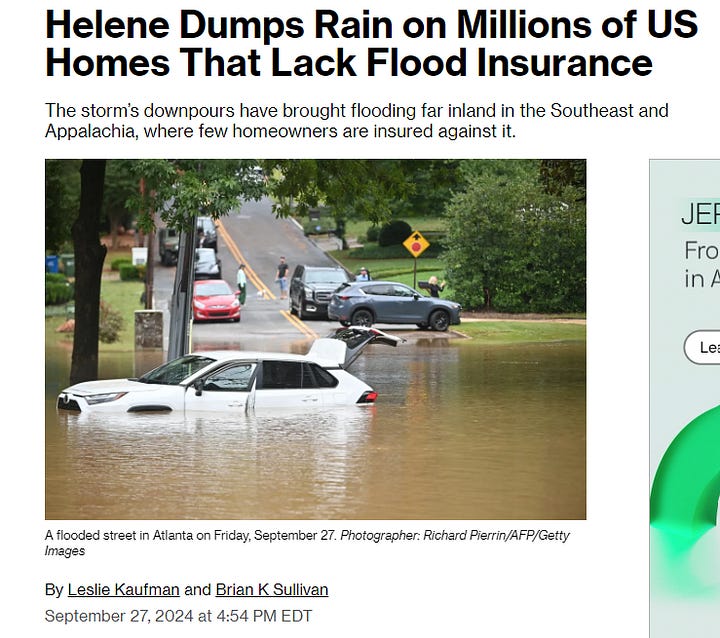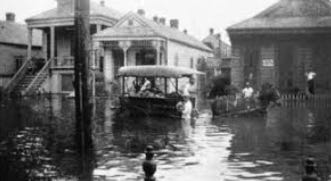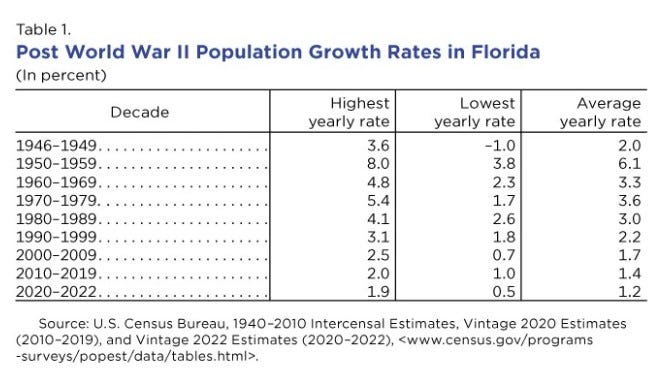Flooding
A Forgotten American History




This weekend on DNN when I was discussing the economic tragedy that will befall many Americans impacted by Helene and Milton who do not have the right insurance coverage, I realized that yet again my lived, mortgage experience was being played out in article after article in the aftermath of Helene and Milton. According to FEMA, only 4% of U.S. households have flood insurance (includes mortgage and non-mortgage homeowners). This is when 99% of counties in the U.S. have been impacted by flooding since 1996 per FEMA itself.
My company performs post-origination Quality Control of closed-loan files as one of its services. One of the question sets has to do with the Flood Certificate and Flood Insurance. In reviewing the compiled results of those audits, I would say that approximately 1% have the “yes” checkbox marked on the Flood Certificate provided by FEMA saying that they are in a special flood zone which requires flood insurance. In other words, when you get a mortgage, you are provided a flood certificate that tells you whether or not you are in an area with a special flood designation. To be eligible for sale to one of the government agencies who control about 84% of the mortgage origination market, the document below is required to be in the loan package.
If you are in one of those special flood zones, then Flood Insurance is required by the Flood Disaster Protection Act of 1973, and it is highly likely you will have coverage through the National Flood Insurance Program (NFIP) which is a federal program that provides flood insurance to property owners, renters and businesses in participating communities. If you are not in one of these zones, you can determine if you would like flood insurance, but you will not need the additional coverage to qualify for your mortgage - a standard homeowner policy which does not cover flood damage will suffice.
But, but, but 99% of counties experienced flooding, says FEMA? How could only 1% of mortgages require flood insurance?
Yes, that’s right. They do say on the form that the “risk of flooding in this area is only reduced, but not removed,” but they certainly do not include the stat above. So, what exactly is the National Flood Insurance Program and how did we get here? How could only 4% of Americans possibly be covered when the risk seems obvious?
Flooding in America is nothing new. In fact, with a quick Google search you can easily find tables that trace flooding of the Mississippi River, for instance, going back to the 16th century. Our government’s handling of that flooding has a storied past. For this week’s post we will start with the great 1927 Mississippi River flood which, according to a paper published by Cambridge University Press, served as the impetus for private insurers to exit the flood insurance market and the U.S. government to step in to cover that gap.
The Great Mississippi Flood of 1927 was the most destructive river flood in the history of the United States, with 27,000 square miles (70,000 km2) inundated in depths of up to 30 feet (9 m) over the course of several months in early 1927…
About 500 people died and over 630,000 people were directly affected; 94% of those affected lived in Arkansas, Mississippi, and Louisiana, especially in the Mississippi Delta region. 127 people died in Arkansas, making it one of the deadliest disasters ever recorded in the state. More than 200,000 African Americans were displaced from their homes along the Lower Mississippi River and had to live for lengthy periods in relief camps. As a result of this disruption, many joined the Great Migration from the South to the industrial cities of the North and the Midwest; the migrants preferred to move, rather than return to rural agricultural labor.
To prevent future floods, the federal government built the world's longest system of levees and floodways. Then-Secretary of Commerce Herbert Hoover's handling of the crisis gave him a positive nationwide reputation, helping pave the way to his election as U.S. President in 1928.
Tracing the evolution of the NFIP after The Great Mississippi Flood of 1927 is interesting- especially against the backdrop of recent flooding and destruction in areas impacted by Helene and Milton. In John M. Barry’s recounting of the events that led to the flood and the unprecedented disaster in his book Rising Tide: The Great Mississippi Flood of 1927 and How it Changed America, Barry argues that the flood itself was exacerbated by failed attempts to control the Mississippi River with levees alone versus using levees and existing outlets for drainage or manmade ones. The initial studies that led to this outcome were borne of political infighting and the egos of the men that wrote them. Consensus occurred on the “levee only” solution due to a lack of will by the Mississippi River Commission and Corp of Engineers to thoughtfully review and consider dissenting opinions. In fact, the Corp of Engineers would cutoff one of the most important outlets which many believe led to the 1927 disaster.
The heavy rains that would ultimately spur the intense flooding began in March of 1927. In April of that year a group of elite insiders from New Orleans would agree (with government approval) to dynamite a levy to prevent New Orleans from flooding. Although Barry argues that New Orleans would not have flooded, the levee was indeed blown, intentionally flooding two parishes and displacing thousands of American citizens.
As the waters continued to rise and flood damage intensified, Coolidge came under intense criticism for failing to visit the area or mount any type of coordinated response to address the devastation. Several governors sent pleas for boats and rescue funds.
FOR GOD'S SAKE, SEND US BOATS! blared the headline in the New Orleans Times-Picayune¸ quoting a plea from Governor Murphree
Although I cannot find a free image of that April 23rd headline, The Shreveport Times references it in the image above.
Disaster relief was not under the purview of the Commerce Department. Regardless the governors from six of the states impacted asked for Herbert Hoover specifically, who made a name for himself heading relief efforts following the war, to manage the response. President Coolidge appointed Hoover to coordinate the response to the flood on April 22, 1927. Hoover helped raise funds for the American Red Cross which was coordinating the effort, its largest operation since World War I. Although the Red Cross coordinated plans, local residents were tasked with executing its directives. Hoover traveled the Mississippi Valley extensively, giving speeches and spearheading the response. He established over one hundred tent cities and a fleet of more than six hundred vessels. By 1928, Hoover had taken center stage as Coolidge retreated to the shadows.
The wide-scale devastation across the country (27,000 square miles) during that time is well documented by director Bill Morris in the 2014 film entitled The Great Flood through archived reels and images. Having grown up in the Mississippi delta, I have a deep respect for the damage that flooding can cause. My grandfather’s childhood home was wiped away in an intentional flood upon the building of the Grenada Dam in Mississippi to mitigate flooding in other areas. That respect has only deepened due to my recent visits to impacted sites here in East TN and NC. In 1927, there were over 330,000 rescues off of levees and rooftops. The death toll, according to Barry, was likely in the thousands, not hundreds, and went under-reported because many of the bodies were buried under the river. After touring sites here, I believe this will also be the case in Appalachia.




Monetary damages for The Great Flood reached approximately $1B, which was “one-third of the federal budget in 1927. If the event were to have occurred in 2023, the damages would total around $1.38T to 1.48T (my emphasis).”
Initially Hoover was praised for his managing of the crisis, but when he failed to comprehend and improve the poor conditions and racial inequality in the tent cities that sprung up due to the displacement of over 700,000 people, that changed. Barry argues that Hoover’s loss of the Northern black vote led to the loss of his re-election campaign. Barry also posits that these failures resulted in influential African-Americans encouraging their community to support Democrats instead of Republicans as they had done historically.
One of the most interesting points in Barry’s books is his thesis that the Great Flood of 1927 and its response irrevocably changed our view of the role government should play in preventing and managing disasters in America. Prior to 1879, planters in the Delta were responsible for maintaining levees, but after political lobbying the Mississippi River Commission was established to oversee federal funds for flood control as well as resolve the dispute between two opposing studies on best practices for flood control. The evidence suggests that the adoption of the “levees only” position by the commission led to the disastrous flooding. On May 15, 1928, Coolidge signed the Flood Control Act (45 Stat 534) authorizing the Army Corps of Engineers to design projects to control Mississippi River flooding. According to Barry, the flood and its aftermath ushered in a new era of government expansion.
There would be years of political fighting after the Great Flood, but after Hurricane Debbie in 1965 became the first billion-dollar hurricane, the National Flood Insurance Program (NFIP) was established in 1968 with the stated goal to provide insurance to help reduce the socio-economic impact of floods. According to a study published in Cambridge University Press in 2014,
The NFIP was implemented in the midst of a remarkable population shift to hurricane-vulnerable states and coastal counties. For example, since 1950 Florida’s astounding 579 percent growth rate was the highest in the nation, raising it from twentieth to fourth in population. Texas grew at a rate of 226 percent, moving its population rank to second in the nation. Other hurricane hazard states like Delaware, Georgia, Maryland, New Hampshire, and Virginia were among the fastest-growing states in the nation. As of 2010, 39 percent of Americans lived in coastal shoreline counties, a remarkable increase of almost 40 percent since 1970—with population densities six times greater in shoreline counties than inland counties
Wait a minute…are you telling me this Florida and Texas migration thing isn’t new? The quoted article was written in 2014, NOT 2024, after all. When discussing the great COVID migration narrative, one of my favorite charts to share on xTwitter is the below:
Notice anything about 2020-2022 and the average yearly rate? Before you say this chart ends with 2022 and doesn’t show more recent migration, we know that 2023 saw the lowest level of relocations since Challenger started its tracking. Relocations did tick up a bit in 2024, but that was due to return-to-office mandates, the majority of which would have been in the other direction. Additionally, the Miami MSA was net negative for the 2023 population dataset.
What does the NFIP look like today? What does it mean that so few Americans who were impacted in areas known as heavy tourist destinations will not have the proper coverage? Over 17 million people visit the Blue Ridge Parkway, headquartered in Asheville, each year. Some of those locations along the parkway no longer exist. There were over 3K short-term rentals (aka Airbnb/Vacasa) in Asheville alone, not to mention the other tourist towns on the Parkway. In Sarasota, there were 7K. By rough estimates using AirDNA data over 100,000 of these short-term rentals (STRs) were in Helene and Milton’s path…and I believe that to be a low estimate. Not only have owners lost primary residences, but investors have also lost cashflow as inflation continues to bite and layoffs and bankruptcies rise. What does this destruction mean for the housing market and the economy at large? And, finally, after a bit of a hurricane delay, I will share the August deep-dive results which were already showing extreme weakness even prior to the storms. Is this seasonality or something else which will be compounded by these two disasters?
Let’s begin…
Keep reading with a 7-day free trial
Subscribe to M3_Melody Substack to keep reading this post and get 7 days of free access to the full post archives.




